Petition launched as farmers call for increased control of ravens
This week saw the launch of a new petition, one aiming to have the Common Raven (Corvus corax) added to the general license – a move that would allow landowners to control (by lethal means) ravens in the same manner as other corvid species.
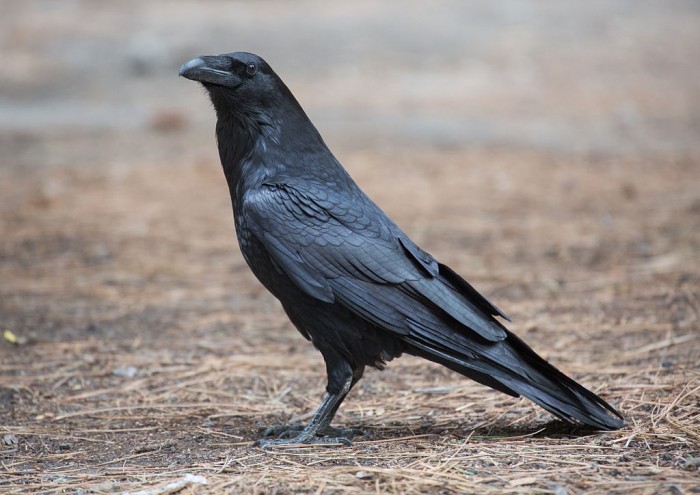 Image: Ravem By Diliff – Own work, CC BY-SA 3.0, https://commons.wikimedia.org/w/index.php?curid=26413439
Image: Ravem By Diliff – Own work, CC BY-SA 3.0, https://commons.wikimedia.org/w/index.php?curid=26413439 This week saw the launch of a new petition, one aiming to have the Common Raven (Corvus corax) added to the general license – a move that would allow landowners to control (by lethal means) ravens in the same manner as species such as Carrion Crow, Magpie and Jay. This is a move that will surely anger many conservationists, resulting in the deaths of a great deal of these currently protected corvids. It is however a move many farmers feel is necessary to protect livestock and thus, their income. It certainly is an interesting topic and one that, for the purpose of this post, I have tried to view without sentiment – a difficult task for someone, like me, who boasts a soft spot for these birds. Before giving my opinion on the matter, a summary of the argument (from both sides) is surely in order..
The Problem
Ravens, by far our most imposing corvid are known to pose a direct threat to livestock, particularly in upland areas (SNH, 2016). This is particularly true when it comes to sheep farming – something made apparent by the graphic and, ultimately rather horrible images that surfaced recently of newborn lambs subject to depredation. A few of these images are shown alongside the petition which can be easily found online.
Farmers claim that due to the ravens protected status and subsequent population increases, that attacks of livestock are becoming more common – a logical assumption and one that is likely true. Attacks by ravens on sheep are not pleasant, the birds targeting various bodily orifices and often, not killing their prey outright. Something that no doubt results in a great deal of anguish for farmers forced to euthanize their stock upon discovery. This has lead many to criticize the protected status of the birds. Among these, Danny Bisset, the voice behind the current petition and Bert Burnett of the Scottish Gamekeepers Association whom stresses not just the threat posed to livestock by increasing raven numbers, but also to wildlife, most notably breeding wading birds.
One cannot dispute that ravens are having an impact upon livestocks and the situation is openly acknowledged by Scottish Natural Heritage (SNH) whom to date have issued licenses for the selective killing of ravens in areas where they pose a problem to rural interests. These licenses have been lambasted by farmers however who feel that killing “a few” birds is not sufficient to protect their stock, a recent example being used to bolster support for the petition. Here a flock of 30 ravens contributed to the deaths of a number sheep (both lambs and ewes) and as such a license to control the birds was applied for. SNH however granted permission for only two ravens to be removed – a move that many feel falls short of the mark when it comes to protecting “at risk” livestock.
SNH have responded to the current petition, promising to take the situation into consideration during their upcoming review of general licenses, their initial response shown below:
“we are aware of this petition and of the interest in adding Ravens to the birds which may be killed under the General licence. The list of species’ which can be controlled in this way is something which we keep under regular review. We are due to hold a consultation on General Licences later this year and following the outcome of that process, we will consider what changes, if any, are required for the general licences.”
The idea of adding ravens to the general license has however unsettled some and a number of groups have voiced their opposition to the notion, among these the RSPB.
Opposition
The RSPB, while acknowledging the “distressing situation” has openly opposed the move to add ravens to the general license. Their initial response to the aforementioned petition going as follows:
“It’s completely understandable why this would be a distressing situation, however SNH does regularly issue licences to farmers to kill Ravens for livestock protection. We think it is therefor completely unnecessary to put Raven on the General Licence, which would result in poorly regulated, unrestricted killing of Ravens. It should be remembered that the Ravens in the East of Scotland are only now recovering from historical eradication and would be once again vulnerable to local extinction if SNH allowed a free-for-all on these birds. Hope that helps to answer your question.“
As ever, by opposing the notion, RSPB have prompted a backlash from those in favour of control measures – some fearful that the organisation could influence the decision on behalf of SNH. It should however be noted that many conservationist share the RSPB’s stance pointing out that moving ewes indoors to lamb would solve the problem without the need for lethal control. Highlighting that by lambing indoors and thus removing a potential food source for ravens that localised high densities would even out – ravens dispersing (or dying) due to a lack of food in the area. The latter statement has however been disputed by those in favour of increased control – stating that moving entire flocks indoors during lambing season is both unrealistic and detrimental to the welfare of the sheep themselves. Large numbers of sheep in close quarters allowing disease to spread and, ultimately, cause the deaths of more animals.
Ravens in the UK
At present, ravens are strictly protected under UK law, the entire British population estimated at 7,400 pairs (RSPB, 2016) and 12,000 pairs (SNH, 2016) – a dramatic increase from decades past where the population crashed due to unchecked persecution. Though this number may appear healthy, it represents only a fraction of the population that the UK “could hold” and indeed, ravens remain scarce in some areas. As the RSPB point out, ravens are still recovering and consolidating their range in certain areas, including the East of Scotland where many issues have occurred. Those in favour of culls have however stated that these estimates are inaccurate and that far more ravens persist in the UK at present. Though the species is gradually colonizing lowland areas, the majority of the raven population remains centered on upland areas – something that may lead to assumptions that the species is “abundant” though, given the turbulent history of C.corax it is far more likely that such numbers represent a natural equilibrium – in essence, what raven populations should be like absent the persecution that took place in decades past.
Opinion
Until figures are produced with a certain degree of accuracy verifying claims that the Raven population is far higher than estimated I cannot support the addition of C.corax to the general license. This is not born of sentiment, or indeed out of opposition for culls or farmers taking action to protect their stock – I have no problem with the current workings of the general license. No, I cannot condone the widespread killing of ravens due to their conservation status. They are, after all, still recovering from the last time humans pushed them towards the brink. In my opinion, allowing the unregulated killing of ravens would render the recent gains of this species obsolete – effectively setting the population back a century or so.
Despite opposing this move however I should stress that I in no way oppose the notion that farmers should be able to protect their stock (and thus their livelihoods). I have stated time and time again the need to be pragmatic when it comes to both protected species and conservation and do feel their is leeway for SNH to possibly build on existing licensing. Obviously all control measures must be highly regulated – the number of birds removed recorded and analysed so not to impact upon the over all population but yes, if SNH were to allow the killing of more ravens in exceptional, problem circumstances, I would not protest. The needs of people must after all be met and while ravens are admittedly rather charismatic and thus inspire a great deal of devotion from nature lovers, it may be possible to strike a balance between the needs of both man and beast. Allowing farmers to protect their interests without declaring “open season” on the species.
I do agree that other measures could be deployed to protect sheep from raven depredation – moving stock indoors during lambing is certainly an option in some locations. I am however not naive enough to believe this is an option in all localities and thus accept that some ravens will need to be killed. Something that animal welfare groups and “compassionate” conservationists will no doubt dispute. Protecting each and every individual of a species, at all costs, is a noble notion but one I do not feel is very realistic. If raven populations remain stable – a likely prospect under the current system, even with an increase in licensing, I stand content. Of course, it would be nice to see other measures given an increased focus prior to the implementation of lethal control – something SNH must surely aid with.

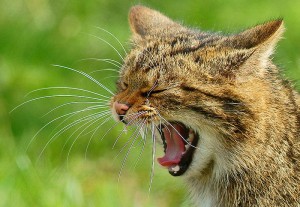
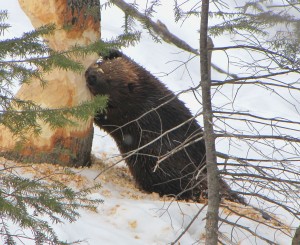
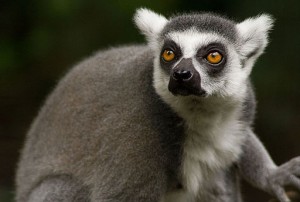
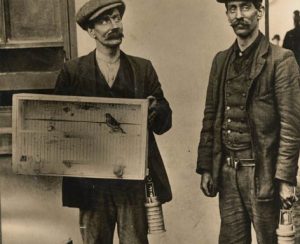
47 Comments
I love birds (and dogs) but livestock owners SHOULD be allowed to shoot Ravens which attack their lambs and sheep.
Really ignorant comment. You don’t save things by killing them, think about that for a second. Killing to save, never worked for 2000 years will not work now.
Buddha’s 5 precepts no killing, why did he say that, ermm, because its important!
Please remember it and remember your ancestors words and don’t kill these birds
I would rather see a couple of dead birds that go about killing than see dead lambs and calves lying about the fields eh? Educate yourself before you comment. I live on a small island and honestly the destruction that these horrible animals do is disgusting.
“Horrible animals”
That puts in to perspective your ignorance on this matter. You are peddling fairy tales, Abigail.
There’s no such thing as a horrible animal.
You have got to be joking. Doesn’t affect you so you don’t care. Before the Raven was protected, the Raven was controlled by landowners, farmers etc. They wern’t Wiped out then and they won’t be wiped out if they are put on the general license now.
Ever had your eyes peck out? No! Well maybe after a few reincarnations you’ll be a lamb and have them and your tongue peck out. I wonder what you’d think of ravens then!
Ok. How do we ensure farmers only shoot birds do do this? FARMERS of all people.
I love animals and I love nature, we regularly visit RSPB centres and are supportive of this charity however I also own sheep and these sheep aside from livestock are our precious family pets, we personally have been fortunate enough to not have had Ravens attack our stock we have had animals die of natural causes overnight and have found them with no eyes and their bodies pecked and bloody in the morning, this has caused us more distress still! I cannot imagine how I would feel if this happened to a live healthy animal- an animal that I had spent countless hours and with lots of worry and stress to safely bring him/ her into the world and have the lambs and the ewe safe to find them the next day attacked viciously by Ravens! I would be devastated! We have only a small flock of sheep and don’t rely on them for income but it must be so very soul destroying for farmers who do rely on them for income, all that work for nothing! With huge financial loss to make a heartbreaking situation worse! I hope that something can be done to control these ‘out of control birds’ in areas badly affected, why is the life of a bird more important than the life of a precious little innocent lamb? I hope the right thing is done and I am absolutely in support of farmers having the right to shoot them in areas where they are causing such distress
Why? Because Ravens are naturally occurring, while sheep are a species bred by humans in the environment they’re currently in. As are pheasants. Perhaps try to work with the natural environment rather than against it? If losing your livestock to natural predators is a problem, either keep them inside during risky periods, or stop trying to rear livestock in areas where you need to kill other animals to do so. It’s a shameful position to give free license to landowners to kill these magnificent birds when these same landowners have shown themselves to be incapable of exercising any restraint with both licenced, and unlicensed killing in the past. Scottish natural heritage are a shameful organisation which panders to landowners and farmers before truly managing the land. They’re quite happy to let hugely uncontrolled deer populations run havoc in the highlands, to the cost of biodiversity.
Very good point, it’s time wildlife took priority over industrial scale farming, where money is the main consideration. The wildlife was there first. It seems that man will kill anything that affects his profits.
Farmers should be allowed to protect their sheep and lambs from raven attacks. I would have thought that 12,000 pairs of raven is a very conservative estimate, each year we see more and more. I have also watched a raven in the Isle of Wight try to attack a small child
As the originator of both the petition and the Facebook page Calling for Raven Control I would wish to congratulate the author of the above reasonably well balance report, however am struggling to comprehend the estimated figures on population given the BTO published average figures on mortality and breeding rates given that 1 pair produce 6 fledglings annually, 3 of these 6 reach breeding age at 3 years of age and go on to produce a further 6 fledgling annually. When worked out exponentially over the average 13 year breeding life of the pair the figure is in excess of 7000 birds. (Please remember these are average figures which account for mortality). Supporters of the Calling for Raven Control campaign have highlighted to SNH the increasing population of Juvenile Ravens due to highly successful breeding rates in problematic hotspots and would question the accuracy of BTO figures in relation to breeding pairs of Raven, as the published figure referencing 7200 breeding pairs was conducted in 2007. We would also put forward the point that the breeding pair figure does not account for the larger juvenile population which are of a greater concern. We would stress that our requirement is for Raven population control; proportionate to the scale of the problem and we do not align ourselves with the current SNH viewpoint which is that lethal control should only be conducted as an aid to scaring practices. This has been echoed by farmers throughout affected areas, as the targeting of individual birds in the field is felt to be ineffective in keeping Raven population at a manageable level.
Those in favour of culls, like the article writer, despite ‘loving’ or having a soft spot for birds, ravens or otherwise are shamelessly protecting an(other) industry that places humans at the top of the food chain, an industry that serves to feed only humans by ensuring these little lambs remain on our plate, let alone a bird’s. Don’t claim you love wildlife by preferring, protecting, ensuring the survival, of one species over another. We are wildlife. People claim they ‘like’ wildlife, but truth is, they love themselves (that is, humans and their needs) more. Let’s not fool about with all this loving a non-human species.
Yes, I love ravens, and yes, I love corvids, and yes, let them eats the lambs! Whether or not they ‘own’ the lambs like these farmers (you don’t ‘own’ anything, that’s human myth), some birds eat meat (however they can get it). Did people not realise this? Maybe not.
Maybe its the fact corvids aren’t adapted to take their prey and that’s simply too opportunistic. Scavenging is the ultimate sin? Humans have never been able to hunt down their prey (since weapons and domestication) and had their roots in scavenging the odd bit of meat from a predator’s kill. Shame on us, we stole too. But then again, it’s hardly like we love our prey birds, you only need to ask the farmers and game farmers.
Practicality is a pathetic argument, and we do not need to wisen up when all these pragmatic arguments serve to limit other species to such an extent that is acceptable to human beings. It’s ‘this much but no more’. What we do do? We simply despair.
As ever the farming fraternity pleading special mitigation. Only families enjoy greater cultural support politically and in the media. The absence of sheep in the British landscape would be a particularly positive development.
Dean if it wasn’t for sheep in our countryside what do you think it would look like? Farmers have tended the land for thousands of year to make it look like it is today if they hadn’t it would be scrub land non productive and inaccessible. Remember without farmers we would all die, every industry needs farming as everything spurs off the industry not just food.
Cattle and sheep absent from our landscapes….never. Its never going to happen
The British countryside looks the way it does largely due to the need for farms to keep stock in controlled areas. We call them fields. They cover the majority of the country. Why else would they be there?
Lived on my dads farm in Norfolk and it seems pretty clear that far too many farmers shoot first and ask questions later.
Give farm workers an inch and they take a mile.
Farmers should def be allowed to shoot them when there attacking their lambs
Where is the link to the petition to sign? This is awful!
All for destroying these ugly beasts. I can’t even begin to imagine the pain these babies suffer. Also the emotional pain for mama
This is absolute disgrace they shouldn’t be protected if there doing damage like this, poor farmers and there livestock. Its heart breaking.
If the ravens are attacking lambs and sheep they must also be giving other wildlife a rough time of it such as young chicks in the nest. I am happy to see raven numbers controlled and reduced their population to help both the sheep farmer and other wildlife
I’m with the farmers on this ☝️
I’m a smallholder and had two adult sheep have their eyes taken out this year (15% of my stock and more like family pets than livestock). Totally agree with the need for farmers to cull these and disagree with the numbers quoted by the RSPB as I’ve gone from having about 15 nests 10 years ago to about 100 nests now. Can someone post where the petition is as I’d gladly sign it? Thanks
Farmers and crafters should definitely be able to protect their livestock and prevent the suffering of these young and newborn animals. The mothers get attacked too, while giving birth and it’s not just ravens, but all the crows need controlled as well.
Agree whole heartedly that farmers should be allowed to protect their sheep and lambs.
How can we let a lamb bleed to death because a Raven has pecked out it’s tongue and eyes ?
If the farmer was as neglegent and allowed lambs to suffer like that, then he/she would be prosecuted !!!
Farmers have a hard enough time protecting their livestock from foxes, and dogs. They don’t need to standby and see their flock killed off by more predators such as Ravens
Please allow the farmers to control these birds. So horrible to witness these lambs being pecked at Sheep are people’s livelihoods
ravens dont confine their activities to lambs at lambing time
summertime coming up to shearing one year we lost upwards of a dozen ewes from ravens .sheep were going on their backs due to wet weather shearing was delayed .even 2 and 3 times daily shepherding didnt prevent ravens pecking holes in abdomens and pulling intestines out .sickening to see sheep suffering such trauma and having to be dystroyed
If farmers had any genuine regard for their own animals or for wildlife, knowing that wildlife is constantly seeking food and may well perceive a lamb as dinner for their family, instead of insisting on slaughtering everything that moves, why not work with nature, take the sheep indoors for lambing and keep them in until large enough to be safe outside…how arrogant to think you can just do whatever you like in an environment where many different species are simply trying to survive, then whine if it affects your bank balance. Get a grip.
Farmers should have the right to protect their livestock.
I don’t mean to insult any individual, but the ignorance of detailed Raven ecology exhibited both in the main article (despite the author’s sympathy with the birds), and in some of the comments, is quite shocking. As a (now retired) professional Ecologist and a lifelong dedicated ornithologist specialising in Ravens, I have carried out extensive research on the interaction between Ravens and lambing ewes on a range of sites in central Scotland. The number of Ravens closely observed during the lambing season varied from one or two, to non-breeding flocks of up to 113 birds. Over a seven-year period of patiently observing them, with the aid of a telescope, I recorded not a single instance of any Raven killing a healthy lamb. Without going into extensive details of my results, by far the most frequent activity undertaken by the Ravens was the ingestion of afterbirths following lambs being born. On numerous occasions I even witnessed ewes standing still while Ravens delicately picked fragments from the ewes’ rear ends. Almost operating as midwives, and the ewes showing very little or no concern. The so-called evidence provided by farmers and shepherds is merely the result of lambs (or adult sheep) dying of natural causes and being found scavenged by ravens, crows, foxes, great black-backed gulls and other scavenging species. Some shepherds jumped to conclusions simply by just seeing groups of Ravens obviously associating with ewes and their lambs. As a result of governmental conservation agencies believing traditional farming beliefs based on anecdotes and jumping to conclusions, hundreds of Ravens are killed annually, some under licence but probably a much larger number illegally. The Raven is a relatively scarce threatened species because of these attitudes in many parts of the UK, and deserves full protection. I can assure hill sheep farmers that their stock is under no significant threat. Most farmers in my study area have been objective and gracious enough to admit this.
Seen it happen. Your observations do not add up at all. Can’t imagine what you think actually does this to lambs. Incredible comment.
I have looked after sick and injured carrion crows and ravens for many years now I release them back to the wild if they make a recovery. I think both species are fascinating and so very intelligent. I also work on a sheep farm in Cumbria and have seen what they do to lambs and ewes but at the end of the day it’s just nature and it happens and under no circumstances should they be shot or poisoned I think the farmers calling fo a cull are hypocrites because most of these poor little lambs who survive the raven attacks will be sent off to have their throats cut and chopped up for human food.
I can’t believe that you rather see these lambs suffer and die from a raven attack than be humanly killed!
Many years ago as a young boy I found a young Carrion crow which I took home and cared for I had him for many years and he was a wonderful pet. The folk who lived near me began bringing injured birds to me to care for and this is something I still do, most of the birds of the birds I have now are corvids crows ravens and rooks and a jay, these birds are fascinating especially the ravens. I could not believe what I was reading when I heard about the raven cull these beautiful birds are just starting to make a come back after centuries of persecution. I work on a hill farm in Cumbria where we have many sheep and have never seen ravens attacking the new lambs but often see them eating the still borns and the carcasses. I can’t believe what the farmers are saying they’re such hypocrites they say oh the poor little lambs and then a couple of months later they send them off to have their throats cut and to be chopped up for the plate. The only thing most farmers are bothered about is profit.
Sounds like we need shepherds to guard our flocks again, and to stop hunting eagles and buzzards, which control corvid numbers. A shepherd with a pony, a bird of prey for pest control, and a few dogs to scare the foxes up on the sheilings would do it. Stop leaving sheep alone to do the kind of idiot stuff sheep do like falling in holes, off cliffs, into bogs and rivers. Most lambs are not kilked by predators, but by being stupid or sick. A shepherd would stop this loss too. Compensate farmers for lost sheep, and guard the sheep, don’t shoot endangered species because of inadequate livestock management and care.
I believe that if there killing live stock on the farmers land they should be aloud to shoot them these horrible evil birds should not be protected
Wise up, if the birds were endangered then fair do’s but they’re not. A farmer is allowed to shoot a family dog for simply worrying his sheep. The birds are affecting livelihoods and making poor lambs suffer a horrible death.
Many farmers don’t even hold a gun licence, I’d be willing to assist if it were possible, I have the required certification.
A farmer should be entitled to protect he’s livestock from these predators, even if they are a protected creature.
I remember seeing this a number of years ago & it still haunts me this must be prevented . Protected my arse lets have these bloody birds wiped out or certainly there numbers reduced significantly & prevent this horror continuing
You display a sickening disregard for wildlife and I don’t believe for one second you witnessed anything. Like the vast majority of brigaded comments in this thread, from people who don’t even understand the the most basic behavioural patterns of corvids, your opinion is based on pure speculation and complete exaggeration.
Please prevent this from happening it’s uncalled for,what a Damn shame.☹️☹️
Another species added to the general license would be music to my ears…. summer time can seem to last forever whilst waiting for the game shooting season to start… and the addition of a “Super Corvid” could be the highlight… I guess 32 gram number 5’s would be the job..
I suppose having a gun & being able to go around killing things makes you feel like a big man eh! Possibly makes up for you having a small dick!